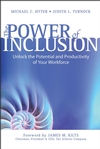 I’m currently working on a variety of career resources; one of which is a guide on developing cover letters. Here I will share what I’ve learned while developing the cover letter resource.
I’m currently working on a variety of career resources; one of which is a guide on developing cover letters. Here I will share what I’ve learned while developing the cover letter resource. One commonly asked question is “why do I need a cover letter?” or “isn’t my resume enough?” I’ve found that a cover letter is a great way to help get you your dream job to increase your engagement at work and can be a great value add in addition to your resume. Your cover letter should be used as a way to show your personality to potential employers.
In the first paragraph of your letter start with a catchy phrase and avoid using something generic such as “I’m submitting my cover letter and resume for consideration for the ____ position. [1]” Use this paragraph to speak about why you want the job, how you heard about it, and why you want to work for the company. In the second paragraph list your skills, knowledge, accomplishments, and abilities. Be sure not to repeat what is already written in your resume. In your final paragraph, thank the person reviewing the cover letter, mention a time you’re available for an interview, and provide your contact information.
In terms of style and formatting, keep your cover letter consistent with your resume. If you’ve used a specific header in your resume, use the same one in your cover letter. Also, try to keep the font size and colour consistent with what you’ve used in your resume. Print your cover letter on white or a slightly off-white paper[2].
A cover letter is an important piece of the job search. Be sure to devote a respectable amount of time to writing your cover letter as you would to developing your resume. The cover letter is often the first thing an employer or hiring manager will review so it’s important to put your best foot forward with your cover letter.
[1] http://resume.monster.ca/12006_en-CA_p1.asp
[2] http://www.settlemanitoba.ca/employment/cover_letter.php#Cover_Letter_DOs




